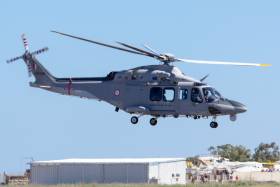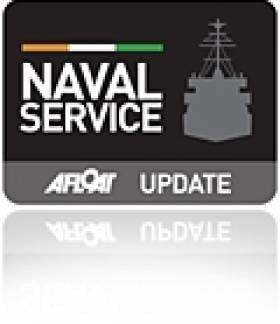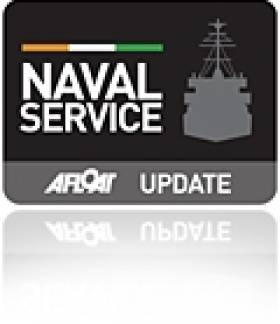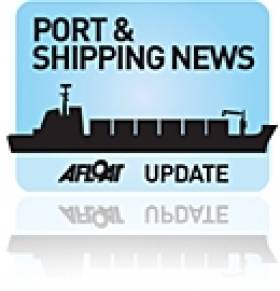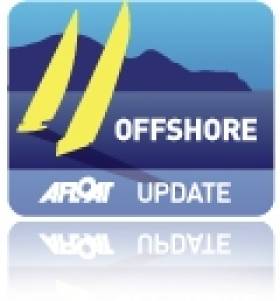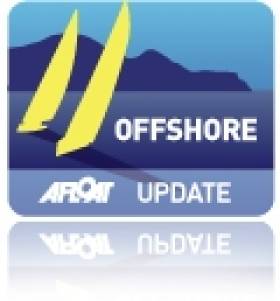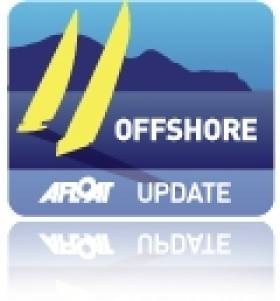Displaying items by tag: Malta
Irish Diver Rescued From Rough Seas In Malta
#Diving - The Times of Malta reports that an Irish diver was rescued off the Mediterranean island in rough seas yesterday (Tuesday 2 October).
The operation at the Wied il-Mielah Window was one of two separate rescues by the Armed Forces of Malta yesterday, as four other foreign divers were retrieved in the Wied il-Ghasri area.
Malta was subject to floods after sudden storm conditions brought a torrential downpour yesterday afternoon.
100 Entries for Rolex Middle Sea Race
The Royal Malta Yacht Club has announced that 100 yachts have now entered its 2015 Rolex Middle Sea Offshore Race.
The 2015 Rolex Middle Sea Race starts on Saturday 17th October. The 36th edition of the race has attracted competitors from at least 22 different countries from all over the world. The 606-mile race starts and finishes in the spectacular surroundings of Malta's capital city, Valetta. The Fortress City is named after its founder, the Grand Master of the Order of St. John, Jean Parisot de la Valette and its impressive bastions date back to the 16th century. From the Grand Harbour, the race is blessed with unsurpassed scenery with its course, taking competitors close to a number of stunning islands around Sicily and Malta, before returning to the Royal Malta Yacht Club for a fantastic welcome.
Since the first edition in 1968, the race has attracted a wide variety of competitors and yachts and this year's race is no different. World Champions and professional sailors from the Volvo Ocean Race and America's Cup will be taking part, as well as passionate corinthian sailors. The yachts are just as diverse, from elegant classics to the world's fastest multihulls. The Rolex Middle Sea Race has an appeal that satisfies a wide variety of sailors.
Three of the world's fastest multihulls will be racing this year, capable of demolishing the race record. MOD 70, Musandam-Oman Sail, will be the first entry from Oman in the history of the race. The multi-national crew racing Musandam-Oman Sail blends established and world-renowned sailors with exciting young Omani talent. In 2014, skippered by Sidney Gavignet, Musandam-Oman Sail set the race and course record for the Round Britain and Ireland Race. Hitting a top speed of 43 knots, Musandam-Oman Sail rarely dropped below 25 knots in completing the 1800 mile course in four and half days.
From St. Barths, West Indies, Lloyd Thornburg's MOD 70, Phaedo3, will also be making its Rolex Middle Sea Race debut. Earlier this year, the lime green trimaran has been smashing records in the Caribbean including the RORC Caribbean 600 multihull record, which has stood since the first race in 2009. Multiple world record holder, Brian Thompson, leads the all-star crew and will be keen to beat Musandam-Oman Sail, which was faster on the water than Phaedo3 in this year's Rolex Fastnet Race.
Californian solar energy expert, Peter Aschenbrenner, will be racing his Nigel Irens 63' Trimaran, Paradox. After MOCRA time correction, Paradox beat both Musandam-Oman Sail and Phaedo3 in the Rolex Fastnet Race and was the Open Class winner for the 2015 Transatlantic Race. Paradox crew includes skipper, Jeff Mearing, crew of the record breaking Hydroptere and Paul Larsen, the fastest man on water with Sail Rocket; 65.45 knots! Neither Peter Aschenbrenner, nor Paradox, have taken part in the Rolex Middle Sea Race before.
“Malta is an amazing place, a crossroads of civilizations for three millennia.” enthused Peter Aschenbrenner. “Mid-October is my favourite season for the southern Mediterranean and we are thinking about taking a couple of extra days after the race to cruise around Gozo. For the race, I love the 600 mile format, which is long enough to be a proper ocean race with lots of tactical challenges but an approachable commitment time-wise for those of us who take the occasional week off of work. I am really looking forward to sailing past Etna, the Messina Strait, around Stromboli and also the Aeolian islands , around the Egadis and Pantelleria. I have been to many of these places as a visitor, but never under sail.”
In sharp contrast to the carbon fibre, high speed multihulls, the Rolex Middle Sea Race has attracted classic yachts and this year, one of the world's most famous.
Designed in 1929 by Olin Stephens, the 52ft yawl, Dorade, won the Fastnet Race in 1931 & 1933. Olin Stephens was skipper through 1932 when he handed the boat to his brother, Rod Stephens who sailed to victory in the 1932 Bermuda Race. Californian, Matt Brooks is now the proud owner of Dorade, and is extremely fastidious with regards to the authentic appearance, maintaining the yacht as closely as possible to her original configuration. Dorade maybe the oldest yacht to compete in the Rolex Middle Sea Race but she is still very competitive. In last month's Rolex Fastnet Race, Dorade was second in IRC 4 and seventh overall out of over 300 yachts racing under IRC and second in class for the 2015 Transatlantic Race.
Dorade is competing in all of the races in the Atlantic series, and of course the Rolex Middle Sea is one of those.” commented Matt Brooks. “Beyond that, this is our next chapter in Dorade's history, to take on races she has never done before, particularly iconic and challenging off-shore races like the Rolex Middle Sea Race. Last summer we competed in several of the coastal classic regattas in the Mediterranean - Corsica, St Tropez and Cannes -- and did very well there. We look forward to experiencing the Mediterranean from offshore in this year's race.”
Godwin Zammit, Commodore of the Royal Malta Yacht Club is looking forward to welcoming over a thousand sailors to the club. “The staff and volunteers that organise the Rolex Middle Sea Race have been working diligently to make ready for our guests from overseas.. The Rolex Middle Sea Race is the flagship race of the Royal Malta Yacht Club and we will be doing everything possible to ensure that the race will run as smoothly as possible. The Royal Malta Yacht Club has excellent facilities and we wish all of the participants a warm welcome and fair winds for this year's race.”
The 2015 Rolex Middle Sea Race starts on Saturday 17th October.
Forget Malta - Send LÉ Aoife To Cork As Floating Museum, Says Mayor
#LÉAoife - Cork county councillors have called for the decommissioned LÉ Aoife to be turned into a floating museum after Maltese military brass branded the vessel as "junk".
"Past its sell by date" is how some members of Malta's armed forces see the 35-year-old OPV that's set to be gifted to the Mediterranean island country to shore up its naval capacity, as previously reported on Afloat.ie.
Now, Cork county mayor Alan Coleman has offered that a tourism group in Cork Harbour could take on the vessel as a museum near the Naval Service headquarters on Haulbowline, in the face of what's been taken as a "snub" by the Maltese.
According to the Irish Examiner, Mayor Coleman has the unanimous support of his council colleagues for the move to write to Marine and Defence Minister Simon Coveney and make a formal offer.
The mayor also expressed his surprise at the gifting of the LÉ Aoife when her sister ship the LÉ Emer was sold at auction for €320,000.
LE Aoife Donation Not Welcome In Malta?
#LEAoife - Ireland's donation of the LE Aoife to Malta is not going down well with military authorities in the Mediterranean island country, according to The Irish Times.
Days ago it was reported that Ireland would be donating the decommissioned Irish Naval Service OPV to help address a shortfall in Malta's current naval capacity as it faces a growing humanitarian crisis in the Mediterranean.
But it's now emerged that members of Malta's armed forces view the 35-year-old vessel as "past its sell by date", with one retired serviceman saying it "sets a very very bad precedent for other junk to follow being dumped on us."
The Irish Times has more on the story HERE.
Ireland's Maritime Strategy 'A Model To Follow' For Malta
#Maritime - Is Ireland a model to follow when it comes to maritime strategy?
It is according to Simon Mercieca of the University of Malta, who blogs on the Malta Independent website about the need for his country to take lessons from the Irish experience.
Citing his visit to a maritime history conference at University College Cork late last year, Dr Mercieca is full of praise for Marine Minister Simon Coveney and his department's focus on revitalising Ireland's ports and coastal areas.
That stands in stark contrast to the situation on Malta as Dr Mercieca would have it, describing a country where maritime "is today a non-entity in our political discussion".
"Despite the fact that Malta built its fortune on its geographical position in the middle of the Mediterranean Sea, the country now lacks a serious maritime vision."
The Malta Independent has more on the story HERE.
Irish Sailors In The Frame in Malta's Middle Sea Race
#middlesearace – Two Irish crewed boats took podium positions in October's Middle Sea Race that concluded this morning. Racing as part of a Maltese crew Irish offshore sailors Kenny Rumball, Andy Boyle, Philip Connor and Barry Hurley are provisionally second overall and first in class three as part of Xpact, an Xp44.
After probably the toughest 24 hours in the 46 year history of the race, Lee Satariano's Maltese J/122, Artie finished the Rolex Middle Sea Race on Thursday 23 October 2014 at 00h 45m 5s in an elapsed time of 4 Days 13 hours 35 mins and 05 secs to win overall.
Last year's winner Otra Vez, a J122 with Ireland's top offshore sailing duo Liam Coyne and Brian Flahive, the August winners of the Round Britain and Ireland race, as part of the hot J-boat crew, was third.
Artie confirmed as overall winner of the 2014 Rolex Middle Sea Race
The Royal Malta Yacht Club has been a hive of activity both day and night, welcoming back yachts taking part in the Rolex Middle Sea Race. By Midday on Day Six 34 yachts have finished the race and 25 yachts have retired. Each and every sailor that has taken part, including those that are still out there, has a story to tell for years to come. The 35th edition of the race has been one of the most memorable in the 46 year history of the race. The storm that arrived on the fourth night of racing was ferocious in its strength and lasted over 24 hours. Thankfully, conditions have now abated somewhat and although there are broken boats and battered crew, the Royal Malta Yacht Club has received no reports of serious injuries. The majority of the fleet are expected to finish today.
Reports of over 60 knots of wind and mountainous seas abound. At the Yacht Club bar, acts of expert seamanship, in exceptionally rough seas, are the main topic of conversation. These anecdotes are resonating around the sailing community, the world over. Take Eric De Turckheim's Teasing Machine, which showed electric pace in the savage seas, only to be dismasted 20 miles from the finish. Ross Applebey and Andy Middleton's Scarlet Oyster, spent last night lashed to a fishing boat, sheltering from the storm. There are a dozen Double Handed teams still out there and soon their stories will add even more depth to what has become a fascinating race.
This afternoon, with all mathematical possibilities exhausted for all of the yachts still racing. Lee Satariano's Maltese J/122, Artie was declared the overall winner of the 2014 Rolex Middle Sea Race.
Artie was also declared the first Maltese yacht to finish the race and winner of IRC 4, ORC 4 and ORC Overall. Godwin Zammit, Commodore of the Royal Malta Yacht Club congratulated Lee Satariano and the entire Artie crew at the Royal Malta Yacht Club.
"It hasn't really sunk in yet." Smiled Lee Satariano. "But now having had the opportunity to reflect on the race, even more important than winning was the achievement of actually finishing the race in the conditions that we had out there. Even near the end my worry was not finishing, right up until the end, we knew boats were in difficulties, which was very unfortunate and that was playing on my mind until we crossed the finish line. I would like to emphasise that one thing we really promote on Artie, throughout the year, is that we have young dinghy sailors on board and a main objective is to get these youngsters out sailing, combining them with our regular crew to create the future sailors that will be representing Malta."
Artie's crew for the 2014 Rolex Middle Sea Race
Lee Satariano, Christian Ripard, Sebastian Ripard (co-skippers), Matthew Gusman, Sam Pizzuto, Tom Ripard, Matthew Almekinders, Gordon Bugeja, Timothy Davis.
Irish Offshore Sailors On Otra Vez Take Overall Lead in Middle Sea Race
#middlesearace – At Stromboli in the Meditteranean Sea this morning, two Irish sailors part of the crew on the Maltese yacht Otra Vez are first in IRC in the 600–mile Rolex Middle Sea Race. Gatt Floridia's Maltese J/122, Otra Vez was leading the class at Stromboli after time correction and immediately headed south towards the Aeolian Islands. Onboard Otra Vez, as Afloat.ie previously reported, are Ireland's top offshore sailing duo Liam Coyne and Brian Flahive, the August winners of the Round Britain and Ireland race.
At 0900 CET Otra Vez was sailing almost two knots quicker than their Maltese rival, J/122 Artie, skippered by Lee Satariano. Andy Middleton and Ross Applebey's British Oyster 48, Scarlet Oyster has taken up the most northerly position of the class, and when passing Stromboli, the highly successful yacht was lying third in class.
By Midnight virtually the entire fleet racing in the Rolex Middle Sea Race had passed through the Straits of Messina, heading for Stromboli, the active volcano that marks the most northerly part of the 608 mile course. As high pressure moved in from the north, the area around Stromboli had virtually no gradient wind and for those yachts yet to reach Stromboli, a south flowing current has slowed proceedings even further. For the competitive offshore yacht racer, performing well in light wind is more difficult than blasting through a storm at top speed.
After two nights at sea, the crew may well be at their lowest energy level for the whole race. The rhythm of offshore life has not been established and the ever changing wind saps energy through numerous sail changes. Concentration also becomes difficult. After the excitement of the start adrenalin levels are now lower and keeping alert is not as easy. In light airs, losing focus on the helm, or on the sail trim, can be very costly and stalling the boat in little wind makes it difficult to get going again.
Half of this race takes place in the hours of darkness. When the crew are deprived of the sense of sight, spotting changes in the wind on the water becomes difficult but other senses tend to make up for this deficiency. Feeling the breeze on your cheek, sensing the heel of the boat, hearing the sails flap or the bigger wavelets tapping at the hull, these become the prime indicators. The first two days and nights of the Rolex Middle Sea race have not been about surfing down big seas with the salt spray hissing past the wheel, but racing well in light airs is a dark art, and there are plenty of magicians out there.
Analysis at 0900 CET 20th October 2014
IRC 1
At sunset on Day Two Line Honours favourite, Igor Simcic's Maxi, Esimit Europa 2, entered a transition zone in the wind and came to a virtual standstill until dawn. This allowed the duelling pair of Maxi 72s to close the gap. Niklas Zennstrom's Swedish JV72, Ran V and George Sakellaris' RP72, Shockwave are now just ten miles behind, Esimit Europa 2. Ran V is now the provisional leader of IRC 1.
IRC 2
After rounding Stromboli, a group of yachts made their intentions clear; gybing south towards the Aeolian Islands in the dead of night. Greek Farr 52, Optimum 3 Aspida, co-skippered by Periklis Livas and Nick Lazos led the way along with Paolo Semeraro's Neo 400, Neo Banks Sails and Marten 49, Moana, skippered by Christian Hamma. The Aeolian Islands are a UNESCO world heritage site but this group of yachts was not going sightseeing. The islands rise up to peaks of several hundred metres. The hot air that rises during the day, cools at night, often forming a local drainage wind. What is more, this group of yachts are the closest to the north coast of Sicily, where potentially a sea breeze may develop during today.
By complete contrast, Dmitry Samohkhin, Russian Swan 60, Petite Flamme has made a move offshore. This places the yacht above the tide, which will aid the team when gybing back towards Favignana. Also fresh winds are predicted to come from the north and if the forecast is true, Petite Flamme would get into this breeze, before the other yachts in their class.
IRC 3
This morning, the yachts racing in IRC 3 have virtually restarted the race with the majority of the yachts forming a new 'line' just after rounding Stromboli. Alessandro Narduzzi's Italian Nelson Marek 43, Il Moro di Venezia XXVII, was leading at Stromboli after time correction. Igor Katalevskiy's Russian First 44.7, High Spirit was second with Andrey Abrusov Russian First 40.7, Courrier du Coeur in third. Two yachts that have enjoyed success in the early part of the race have a difference of opinion in tactics. Italian Adria 49, Ars Una, skippered by Alberto Nunziante, has taken up the most southerly position in the class. Whilst Bastiaan de Voogd's Dutch Sydney 43, Coin Coin has taken up the most northerly position.
IRC 5
At Stromboli, Peppe Fornich's Grand Italian Grand Soleil 37, Sagola Biotrading was leading the class after time correction and was nine miles ahead of their nearest rival on the water, Christopher Spray's beautifully restored classic, Stormy Weather, which has John Brinkers on board. "We are at Stromboli and it has 'glassed out', confirmed John Brinkers. "Very frustrating as Stormy Weather had a great passage last night, we had 12 knots of wind and our water line length came into great use, putting us in a good position. However this morning all we can do is watch as the smaller lighter boats drifted past us, taking away all of the miles earned through hard work last night. There isn't much we can do at the moment, but keep our spirits up and hope that the forecast for more wind will come sooner rather than later."
Frustrating as it may be for the crews racing on the slower yachts, time is not standing still. In fact the lack of breeze should be very encouraging. The overall winner of the race is decided by the IRC rating of the yacht, which is a time correction handicap. For the yachts with lower rating, their 'clock' is ticking far slower than the high performance yachts and maybe - just maybe - the 2014 Rolex Middle Sea Race will be won overall by one of the smaller yachts in the race.
International Fleet Bound for Malta 2014 Rolex Middle Sea Race
#rorcrmsr – The 606-mile yacht race takes place in the heart of the Mediterranean and covers one of the most beautiful courses in the world. Starting and finishing in Malta, the route includes the deep azure waters around Sicily including the Aeolian and Egadi Islands, as well as Pantelleria and Lampedusa. One of the most stunning vistas is Stromboli, the active volcano which is a course mark. Last year, a record 99 yachts took part and with less than two month to the start of the 35th edition, 69 yachts have already entered from 17 different nations.
"The entry level so far is very encouraging, we expect to have about the same number as last year but the club would love to see the entry list past the 100 mark for the first time, since the first edition of the race in 1968." commented Godwin Zammit, Commodore of the Royal Malta Yacht Club. "The quality of the entrants seems to be going up every year, amongst them we have sailors from all over the world; world champions, top professionals, as well as corinthian sailors. The Rolex Middle Sea Race is the highlight of the year for the Royal Malta Yacht Club and all of the competitors will be made very welcome at our clubhouse during the event."
The Line Honours favourite for the Rolex Middle Sea Race is Igor Simcic's Maxi, Esimit Europa 2, skippered by by multiple Olympic and America's Cup winner, Jochen Schümann. The 100ft canting keel maxi has taken line honour victories in the years from 2010 – 2012, becoming only the second yacht in the history of the Rolex Middle Sea Race to take it three times in a row. Last year, Esimit Europa 2 damaged their mast on the way to the race and was unable to compete but the Slovenian yacht, with a world class international crew is returning with the goal of taking Line Honours for an unprecedented fourth occasion.
The battle for the overall win after time correction is already developing into a fascinating competition. Niklas Zennström's Team Rán have won numerous blue ribbon offshore events and world championships but an overall win in the Rolex Middle Sea Race, has eluded them on three separate occasions. Niklas Zennström's latest Mini Maxi, Rán 5 will be competing in October and their immediate rivals on the water will include Roberto Tomasini Grinover's Mini Maxi Robertissima. Several other world class Mini Maxis are also expected to be competing.
A Cookson 50 has won the Rolex Sydney Hobart, Rolex Fastnet Race and the RORC Caribbean 600 but the canting keel flier has yet to win the Rolex Middle Sea Race overall. This year, three Italian Cookson 50s will attempt to change that statistic. Guido Paolo Gamucci's Clippa Lippa and Germana Tognella's Cantankerous have raced before but Vincenzo Onorato's Mascalzone Latino will be making their first appearance with Volvo Ocean Race winner, Jules Salter on board as navigator.
Three of the fastest yachts in this race should have a fascinating battle on the water. This August, Jens Kellinghusen's German Ker 51, Varuna was the overall winner of 2014 Sevenstar Round Britain and Ireland Race and class winner for the 2013 Rolex Sydney Hobart. Varuna is being shipped to Malta especially for the Rolex Middle Sea Race, Round the world yachtsman, Guilermo Atadil will be navigating the German entry. Jascha Bach and Toni Guiu, Spanish TP 52 Balleria is en route from Barcelona, hoping to emulate last year's overall winner, TP52, B2. German Carkeek 47, Black Pearl will be making its debut at the Rolex Middle Sea Race. Skippered by Stefan Jentzsch, the all carbon flyer will have a stella crew including, Marc Lagesse, James Carroll, Peter van Niekerk and Luke Molloy.
Royal Malta Yacht Club member, Finis Pit will be racing his German Ker 53, Dralion with just two crew, already six yachts will be racing in the IRC Double Handed class including race veteran, Beppe Bisotto who will be racing his Venetian Fast 42, Atame.
Six majestic Swans will also be taking part this year, including Grey Goose of RORC sailed by Tobias Koenig. Swan 65. Eddie Craighill's Swan 65, Rebel Jaguar, will be skippered by Franck Petitgas. Dmitriy Samohin, President of the Russian Dragon Class will be racing Swan 60, Petite Flamme with Olympic and America's Cup helmsman, Andy Beadsworth as part of the crew. Monaco's Paul Basson will be racing his elegant Swan 46, Foreign Affair Two Handed. James McGarry's Scottish Swan 45, Eala of Rhu will be sailing to Malta having competed in the Swan 45 World Championship in Sardinia. Chris Frost's elegant Swan 36, Finola was launched in 1968, the fourth Swan ever built is still very competitive, having won class at the 2013 Swan European Championship, winning every race.
The Rolex Middle Sea Race attracts a variety of yachts including timeless classics such as the classic yawls, Tomahawk and Stormy Weather. Tomahawk was designed by Sparkman & Stephens as an ocean racer in 1938 and was sympathetically rebuilt to her original design by the present owner, Jamie Abdy Collins. Stormy Weather of Cowes was designed by Olin Stephens in 1934. In 1935 she won both the Newport-Bergen Transatlantic race and the Fastnet race. Stormy Weather has been owned by Christopher Spray, from the UK, for the past nine years. Tarquin Place, from Tasmania is the boat captain.
Entry for the Rolex Middle Sea Race closes on October 3rd 2014.
#mgmboats – Irish yacht and boat sales firm MGM Boats have opened a new brokerage and sales office in Meditteranaean island of Malta, a popular boating destination.
The Dun Laoghaire based fim which has European bases in Portugal and the UK has sold a number of Brokerage boats into Malta over the past couple of years and according to MGM director Martin Salmon, the company sees 'great opportunities for development in this popular boating area in the near future'. This new venture is in co-operation with the BH Group who currently distribute the Sunseeker and Sessa brands in Malta.
The offices are located in Portomaso Marina in St Julians. The head of brokerage Tim Plail is now actively promoting our brokerage services and growing the MGM Boats brokerage listings.
MGM Boats currently have over 320 Brokerage boats for sale and these are berthed in a wide variance of locations throughout Europe. The new Malta office contact details are:
MGM Boats Malta
The Quay
Portomaso Marina
St Julians
Malta
Tel: +356 21 385678
Email: [email protected]
Irish Sailors to the Fore in Malta's Middle Sea Race
#middlesearace – Offshore sailors Brian Flahive and Liam Coyne (from the Dun Laoghaire based double – handed First 36.7 Lula Belle) are part of the crew on the class 4 winning boat, Otra Vex in this year's Malta's Middle Sea race. A large Irish contingent are crewing on a variety of international entries in the race and two Irish Beneteau designs, Paddy and Dermot Cronin's First 40.7 Encore from Malahide and Tony Tennyson/Des Kelliher's First 44.7 Gallileo from the National Yacht Club (NYC) in Dun Laoghiare have finished the race, both racing in class four and finishing 23rd and 32nd respectively.
The Lulabelle pair also from the NYC have crewed regularly on Otravex since last year and it's their second middle sea race on her. Coyne and Flahive also did the Rolex Giraglia Cup where they were third overall of 200 yachts.
Barry Hurley, Andrew Boyle and Philip O'Connor were crewing on the XP 44 X-Pact and came second in class two after a great tight race with Oiltanker Juno.
Dun Laoghaire sailing instructor Kenny Rumball was sailing on Comanchie Raider
IRC Four was the largest class taking part in the Rolex Middle Sea Race. 46 yachts from 10 different countries including Croatia, Czech Republic, France, Ireland, Italy, Montenegro, Malta, Russia, Sweden and the United Kingdom.
Edward & Aaron Gatt Floridia's J/122, Otra Vez completed the 606-mile race at dusk on Day Five, after racing with a highly competitive fleet. Otra Vez has been announced as the winner of IRC Four. Rod Stuart's Scottish Elan 410, Eos was less than 2 minutes behind on corrected time and Renzo Grottesi's Italian X40, Pita Maha was just nine minutes behind Otra Vez.
The sound of clinking glasses and rousing voices filled the air today at the Royal Malta Yacht Club. Hundreds of competitors enjoyed the full hospitality of the club, sharing their stories with fellow competitors over a glass or two. After days and nights at sea, isolated from the outside world, the cosmopolitan crowd also enjoyed good food and excellent company.
The remaining yachts taking part in the Rolex Middle Sea Race are expected to arrive at the Royal Malta tomorrow. At 1500 on Day Six of the Rolex Middle Sea Race, 12 yachts are still racing.
Results here



























